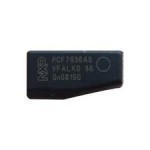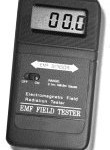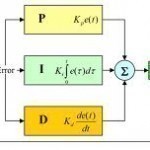A rheostat is an electrical component that has an adjustable resistance. It is a type of potentiometer that has two terminals instead of three. The two main types of rheostat are the rotary and slider. The symbol for a rheostat is a resistor symbol with an arrow diagonally across it. Rheostats are used in many different applications, from light dimmers to the motor controllers in large industrial machines. Rheostat Construction Most rheostats are the wire-wound type that have a long length of conductive wire coiled into a tight spiral. The Read More
Transponder

A transponder is an automatic electronic monitoring or control device that receives, cross-examines, amplifies and retransmits the arriving signal. It is primarily implemented in wireless communication. The word ‘Transponder’ itself is a combination of two words; transmitter and responder (occasionally abbreviated to TPDR, TR, XPNDR, and XPDR). A transponder works by receiving a signal on a component called “interrogator” since it effectively inquires for information, then automatically transmitting a radio wave signal at a predestined frequency. In order to broadcast a signal on a dissimilar frequency than the one received, Read More
Amp (Ampere)
The ampere, amp for short, is the standard unit of electrical current. It is defined as the current required to produce a certain force between two parallel and infinitely long wires separated by one meter. According to Ohm’s law, one ampere of current is produced when one volt of potential difference exists across a conductor with one ohm of resistance. One ampere is also equal to the flow of one coulomb of electric charge per second. History of the Amp The ampere was defined at an international conference in 1881, Read More
EMF Meters

An EMF meter detects and measures an electromagnetic field. There are many types of EMF meters and they have many uses, including ghost hunting. Most EMF meters are “AC EMF meters” and can only detect the rate of change in an oscillating magnetic field. However, commercial grade EMF meters that can detect specific electromagnetic frequency ranges are available. While any EMF meter is generally capable of taking accurate measurements of most electromagnetic fields, the user should do research before purchasing an EMF meter for any specific project, experiment, or task. Read More
Alternator
An alternator turns mechanical energy into electrical energy, in the form of alternating current. It is a type of generator, most commonly used by automobiles to power their electrical systems. They are usually mounted on the side of the internal combustion engine. How Alternators Work An alternator consists of a rotor, stator, rectifier, housing, and shaft. The shaft is usually connected to the car engine by a belt and pulleys. The rotor is fixed to the shaft, and consists of several wire bundles wound around an iron core. Current is Read More
Magnetic Dry Erase Boards

A whiteboard (dry erase board or marker board) is a glossy finished surface that is used with non-permanent markers for presenting information. These boards are now being used more often due to their ease of use, clarity, and cleanliness. The traditional blackboard has been replaced for several reasons: Inefficient – Blackboards are inefficient. Costly – Chalk breaks often and wears down very quickly. Chalk’s durability varies from user to user. So, unlike a dry erase board marker, there is no set amount per use. Easily Damaged – A blackboard may Read More
High Frequency Alternator
A high-frequency alternator is an electrical device used for radio communications. It yields high-frequency, periodically alternating current that can go as high as 100,000 Hz for the purpose of producing stable radio waves. The History of High-Frequency Alternators By the first decade of the 20th century, wireless telegraphy was already in place and was no longer a novelty. The problem, however, was that the primary means of wireless communication – the spark-gap transmitter – was seen to pose major problems. For one, communications took place through the Morse Code system. Read More
What is a PID Controller?

A PID (Proportional Integral Derivative) controller is a device that makes changes to a system based on current and intended settings. PID controllers are used in a wide variety of industrial control systems and are the most commonly used feedback controllers in the world. PID controllers allow users to obtain and/or maintain preferred conditions within a system by modifying a variable input until preferred conditions are reached. How a PID Controller Works PID controllers rely on three main elements: the process variable, the setpoint, and the manipulated variable. The process Read More
Digital Projectors
Digital projectors convert an analog or digital video signal into a corresponding image on a projection screen using a complex assembly of lens and high intensity lighting. Digital projectors rely upon a very bright light to project the resulting image on the screen. Modern projectors can smooth any curves, reduce blurriness, and offer increased sharpness, all hallmarks of digital technology. Digital video projectors have extensive use in a variety of places like conference room presentations, classroom training, and home theatre applications. The quality of the projected image is measured in Read More
Ohm
The ohm is the standard unit of resistance for direct current, and the standard unit of impedance for alternating current. According to Ohm's law, one ohm is the resistance between two points that requires one volt of potential difference to produce one ampere of current. In the process, one watt of energy is converted into heat. History of the Ohm The ohm was formally defined at an international conference in 1881, and is named after Georg Simon Ohm (1787 – 1854), a French physicist. The symbol is the Greek capital Read More


Share on: